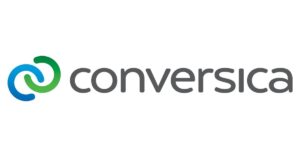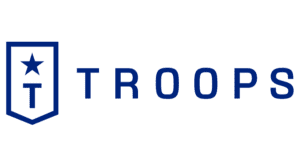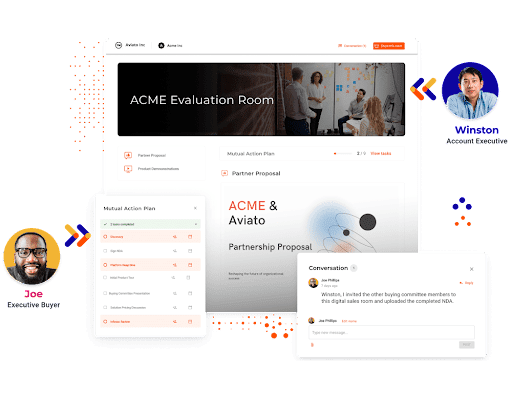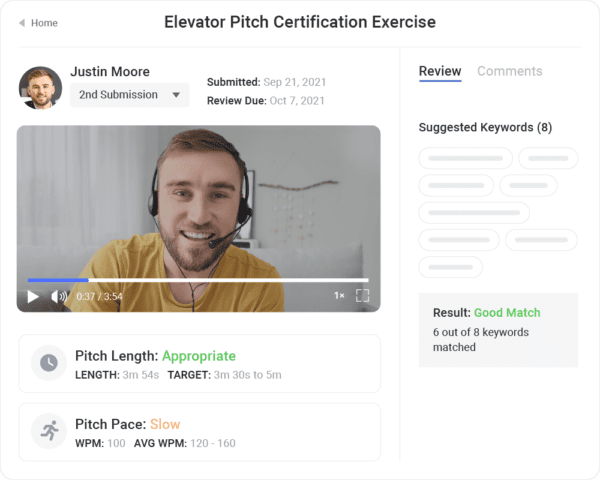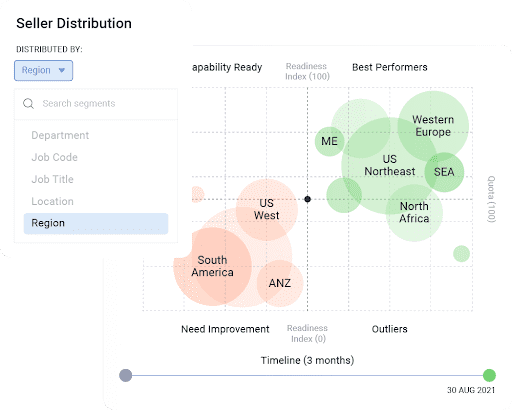How to Use Your CRM, Enablement Analytics, and Call AI to Inform Better Coaching
![]() Elisha Zhang
on
February 12, 2024
Elisha Zhang
on
February 12, 2024
Today we’re re-sharing one of the most popular videos from our series focusing on reducing your tech stack chaos. In it, Elisha Zhang, one of our product marketing managers, shares insights on reducing chaos in sales onboarding by using CRM, enablement analytics, and conversation intelligence. Elisha shares three key takeaways: identifying short-term deal risks by aligning competencies with sales stages, mitigating systemic risks through targeted coaching, closing skill gaps, and building a coaching culture by evaluating teams based on CRM data. The approach enables accurate risk assessment, sustained improvement, and a culture of continuous improvement.
Key takeaways
Identify short-term deal risks
- Align competencies important to roles with different sales process stages.
- Develop skill profiles for each rep to identify strengths and gaps.
- Utilize this information for more accurate short-term risk identification, especially in forecasting and deal reviews.
Mititgate systemic risks and closing skill gaps
- Coach reps based on identified skill gaps, providing targeted support.
- Leverage conversation intelligence to review previous calls and offer hands-on feedback for sustained improvement.
- Evaluate teams or the entire organization on competencies within the CRM context to identify and remediate bottlenecks.
Build a better coaching culture
- Use data sets to determine trends and root causes of deal challenges, fostering a culture of continuous improvement.
- Validate hypotheses by reviewing calls from lost deals and incorporating insights into future coaching and training sessions.
Transcription
Hi everyone, my name is Elisha Zhang, and I’m a product marketing manager at Mindtickle. I know that I often find myself anticipating a lot of overwhelmed when it comes to onboarding with a new company, particularly because of all of the technology chaos that is out there in our modern world. I’m here today to help reduce some of that chaos as you enter the new year. In particular, we will discuss how you can use your CRM enablement analytics and conversation intelligence to better inform your coaching.
Once you have married your CRM, enablement, analytics, and conversation intelligence, and those three data sets are in harmony, you can do some things. The first is that you’ll be able to identify short-term risks when it comes to your deals more accurately. And then the second is that in the long term, you’ll be able to mitigate all of that risk, especially at a more systemic level. And you’ll be doing that by closing skill gaps that you’ve identified. Okay, so to actually identify that short-term risk, you will need to set yourself up for success by having competencies that are important to your role identified and mapped to the different stages of your sales process.
Once all of that is done, you’ll want to use those competency profiles and identify a skill profile for each rep, which will help you see if a person has this gap, and this person is very strong in this particular skill. Once you have this better understanding of folks individually, your managers will be better able to use the information in their CRMs for forecasting and deal reviews. That’s because if you see a particularly large deal, for instance, and you’re very excited about it for this quarter, you can go into see who the owner of that deal is and try to understand whether or not their current skill gaps are going to introduce any risk to the field.
For example, I might have a rep who is not particularly strong and negotiation. I can see that this quarter, they have a huge deal entering the negotiation stage and we really want to close it out this quarter. Once I really actually have identified that and see that that is a risk, then I’ll be able to coach them a little bit better because I will know the targeted skill that is going to be necessary to get them through and close this deal.
You’ll be able to do all of that with the help of conversation intelligence as well because you’ll be able to go back and review the calls previously held in the deal. As well as take a look at that rep’s calls from similar stages on different deals, and help provide feedback to help them improve as you give them a little bit more hands-on support.
Of course, once you start to coach folks on skills, you’ll find a lot more sustained improvement and mitigation of risk. In particular, if you can evaluate your teams or your entire organization based on those competencies in the context of your CRM data, it will help you with identifying and determining remediation for actually opening up the bottlenecks.
So perhaps it’s the case that many of your deals are getting stuck or being lost at the proof of concept stage. It might also be the case that you see as an organization that folks are not scoring terribly high on the demo role plays. Well, when you take these two things in combination, you will probably come up with the hypothesis that the demos that we’re doing are not very good. And as a result, we’re losing deals once we get into the proof of concept stage. Okay? Pretty simple. Let’s try and go validate that, take a look at all of your calls that are, or maybe a select few calls for particularly big lost deals from the last quarter or last year, and validate whether or not it was the demo, or maybe it was another skill that was lacking. It could be the case, for instance, that the demo itself was very good. But because we weren’t very good at active listening, it just was a generic demo, as opposed to something that was more tailored for the prospect.
Once you’ve gotten a better understanding and really determined exactly how you want to remediate, maybe you can go ahead and incorporate that into your next Escale. These are just a few ways to use these three data sets to build a better coaching culture. I hope this video has given you some tips on how you can reduce your technology chaos and build a better coaching culture in the new year.
Mindtickle in Action
Ready to learn more about how Mindtickle helps you use your CRM, enablement analytics, and conversation intelligence to inform better coaching?
Book a Demo



